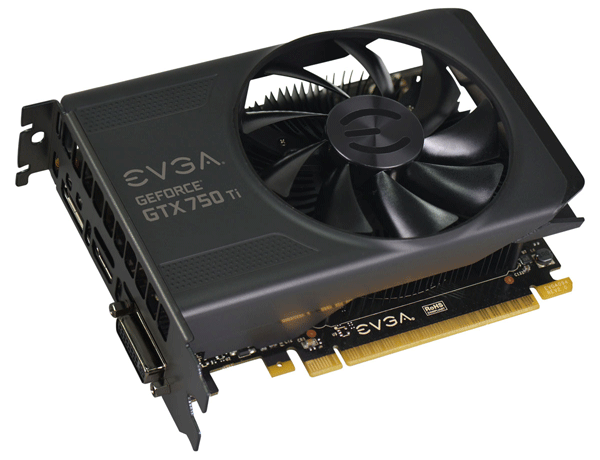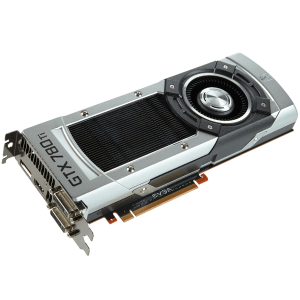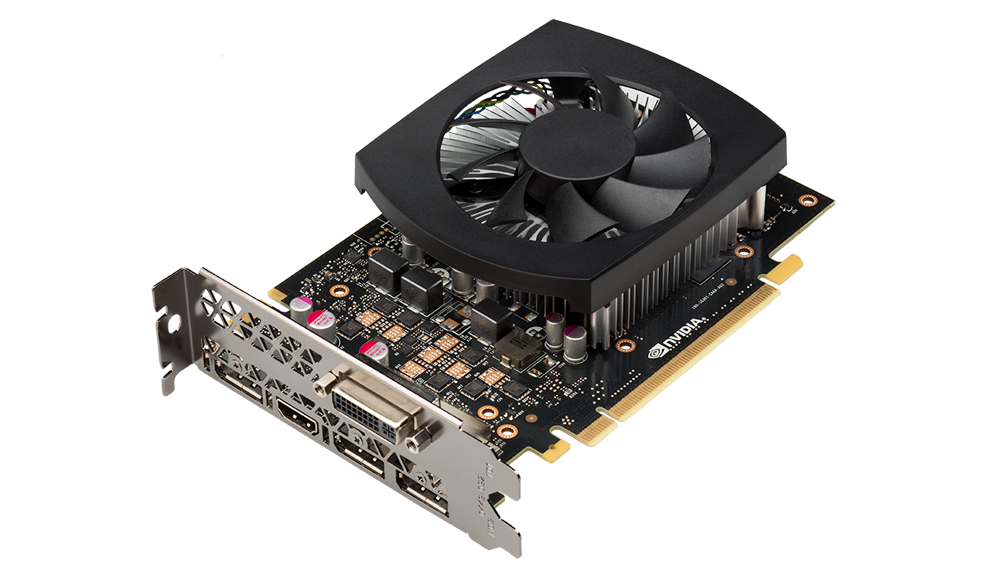 Eighteen months is a very long time in the world of graphics cards. This is roughly how long the venerable GeForce GTX 750 Ti from NVIDIA has been on the market. When the card was released, it offered an amazing level of efficiency with the new Maxwell architecture and just enough performance for those wanting to play games at 1080p resolutions. Since then, NVIDIA has pretty much ignored the sub-$200 graphics card market allowing AMD to push out a variety of cards that offered superior performance at roughly the same cost even if they were not as efficient. Now NVIDIA is taking the newer 900 series cards and releasing a new GeForce GTX 950 to fill in the gap between the older GTX 750 Ti and the still over $200 GTX 960. PC gamers on a budget will definitely want to take a look at it. Continue reading
Eighteen months is a very long time in the world of graphics cards. This is roughly how long the venerable GeForce GTX 750 Ti from NVIDIA has been on the market. When the card was released, it offered an amazing level of efficiency with the new Maxwell architecture and just enough performance for those wanting to play games at 1080p resolutions. Since then, NVIDIA has pretty much ignored the sub-$200 graphics card market allowing AMD to push out a variety of cards that offered superior performance at roughly the same cost even if they were not as efficient. Now NVIDIA is taking the newer 900 series cards and releasing a new GeForce GTX 950 to fill in the gap between the older GTX 750 Ti and the still over $200 GTX 960. PC gamers on a budget will definitely want to take a look at it. Continue reading
How Going Slower Can Be Faster with AMD’s HBM
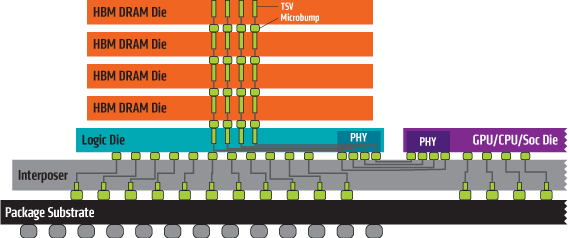 In order for a graphics processor to produce high quality images in 3D, it has to deal with a huge amount of data. As the screen resolutions and details increased, the graphics processor have had to get faster and more efficient. One of the big bottlenecks for this process is the memory. The amount of memory required has also increased. Not only that, but the speed at which that data needs to move from video memory to the graphics processor also has to improve. The primary video graphics memory has been GDDR5. The problem is that this is now reaching its limits in terms of both power and speed. AMD and the JDEC have come up with a new solution they are calling HBM (High Bandwidth Memory). Find out how this could help improve your future PC graphics for both desktop and laptop systems. Continue reading
In order for a graphics processor to produce high quality images in 3D, it has to deal with a huge amount of data. As the screen resolutions and details increased, the graphics processor have had to get faster and more efficient. One of the big bottlenecks for this process is the memory. The amount of memory required has also increased. Not only that, but the speed at which that data needs to move from video memory to the graphics processor also has to improve. The primary video graphics memory has been GDDR5. The problem is that this is now reaching its limits in terms of both power and speed. AMD and the JDEC have come up with a new solution they are calling HBM (High Bandwidth Memory). Find out how this could help improve your future PC graphics for both desktop and laptop systems. Continue reading
Adaptive Refresh Rates: G-SYNC and FreeSync
 Gamers often talk about the frame rates that they get out of a game with their video card. This tells how many frames per second that the video game and software can generate. In order to display them, they have to be drawn upon the monitor. The process of moving those rendered frames from the video card to the display introduces a whole new set of problems, one that many gamers are familiar with. Both NVIDIA and AMD have release new technologies to try and provide a smoother and faster display but how do they improve this and is this consumers should actually use? Continue reading
Gamers often talk about the frame rates that they get out of a game with their video card. This tells how many frames per second that the video game and software can generate. In order to display them, they have to be drawn upon the monitor. The process of moving those rendered frames from the video card to the display introduces a whole new set of problems, one that many gamers are familiar with. Both NVIDIA and AMD have release new technologies to try and provide a smoother and faster display but how do they improve this and is this consumers should actually use? Continue reading
NVIDIA Improves Performance and Efficiency With GTX 980 and GTX 970 Cards
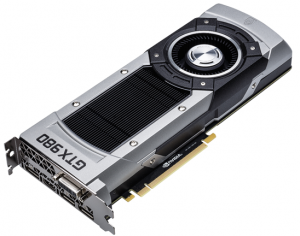 NVIDIA surprised the PC graphics last night with their launch of their latest high end consumer graphics card the GeForce GTX 980. Much of this has to do with the fact that the price is going to be significantly less than the GTX 780 Ti that it will be replacing but the card is able to do so by being far more efficient akin to what AMD did recently with their Radeon R9 285. The basic chip technology hasn’t really changed that much for the past four years in the graphics market but the way that it is used certainly has. NVIDIA demonstated this when they launched the GTX 750 Ti at the beginning of the year. In fact, the GPU for the GTX 980 and the more affordable GTX 970 are both based on the second generation of the Maxwell chip that powered the GTX 750 Ti. So what exactly does this new graphics card bring with it? Continue reading
NVIDIA surprised the PC graphics last night with their launch of their latest high end consumer graphics card the GeForce GTX 980. Much of this has to do with the fact that the price is going to be significantly less than the GTX 780 Ti that it will be replacing but the card is able to do so by being far more efficient akin to what AMD did recently with their Radeon R9 285. The basic chip technology hasn’t really changed that much for the past four years in the graphics market but the way that it is used certainly has. NVIDIA demonstated this when they launched the GTX 750 Ti at the beginning of the year. In fact, the GPU for the GTX 980 and the more affordable GTX 970 are both based on the second generation of the Maxwell chip that powered the GTX 750 Ti. So what exactly does this new graphics card bring with it? Continue reading
AMD’s New Radeon R9 285 Card Does More With Less
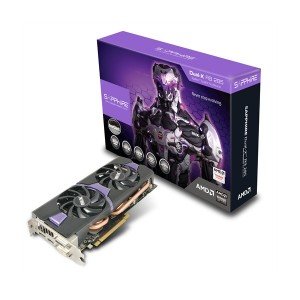 Let’s face it, most people who are getting a graphics card on their system are doing so to play games but they don’t need a huge amount of performance because they only have a 1920×1080 resolution display. Because of this, the majority of the graphics card sold on the market cost less than $300. AMD just released their latest graphics card, the Radeon R9 285, priced around $250 as a mainstream option for those that want a solid performance 3D graphics card. The weird thing is that if you look at the specs for the device, it looks to have less than the Radeon R9 280 that it is replacing. Can this card actually perform better with less? Continue reading
Let’s face it, most people who are getting a graphics card on their system are doing so to play games but they don’t need a huge amount of performance because they only have a 1920×1080 resolution display. Because of this, the majority of the graphics card sold on the market cost less than $300. AMD just released their latest graphics card, the Radeon R9 285, priced around $250 as a mainstream option for those that want a solid performance 3D graphics card. The weird thing is that if you look at the specs for the device, it looks to have less than the Radeon R9 280 that it is replacing. Can this card actually perform better with less? Continue reading
AMD Unleashes Its Latest Dual GPU Card, For Those That Can Afford It
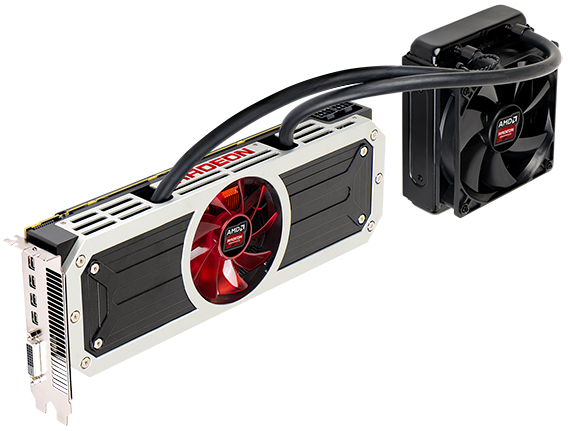 The graphics card market has been in a bit of a funk for the last couple of years. While the performance of the high end cards has improved, the amount of performance needed to play games at the typical 1920×1080 resolution is just fine in the budget to mid-range cards. So why does AMD end up announcing their new graphics card that is more than twice the cost of their previous board? Basically, AMD and NVIDIA are looking to target those users that are either using their PCs for high resolution gaming with 4K UltraHD displays or using multiple displays. Sure, the cards are also being used for heavy computing tasks as well such as scientific research and cryptocoin mining. The design of the Radeon R9 295X2 is both very different yet familiar at the same time… Continue reading
The graphics card market has been in a bit of a funk for the last couple of years. While the performance of the high end cards has improved, the amount of performance needed to play games at the typical 1920×1080 resolution is just fine in the budget to mid-range cards. So why does AMD end up announcing their new graphics card that is more than twice the cost of their previous board? Basically, AMD and NVIDIA are looking to target those users that are either using their PCs for high resolution gaming with 4K UltraHD displays or using multiple displays. Sure, the cards are also being used for heavy computing tasks as well such as scientific research and cryptocoin mining. The design of the Radeon R9 295X2 is both very different yet familiar at the same time… Continue reading
Why NVIDIA’s Budget GeForce GTX 750 Ti Card Is Such a Big Deal
NVIDIA Regains Its Lead Against AMD In Several Ways
AMD Radeon R9 290X Offers Faster Gaming For Less Than NVIDIA
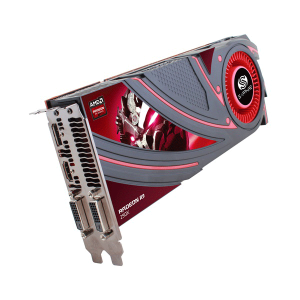 The majority of AMD’s most recent graphics cards are not much more than renamed versions of existing cards. Frankly, there are not many benefits to buying the new R7 or R9 cards over the past generation. This changed with the announcement of the Radeon R9 290X late last week. This card differs from the others in that it really does offer a new experience for those looking at fast frame rates at high resolutions and aren’t looking to spend up to a $1000 for an NVIDIA GeForce TITAN card. In fact, retail prices are expected to be just $550 making it less expensive than even the GeForce GTX 780. Continue reading
The majority of AMD’s most recent graphics cards are not much more than renamed versions of existing cards. Frankly, there are not many benefits to buying the new R7 or R9 cards over the past generation. This changed with the announcement of the Radeon R9 290X late last week. This card differs from the others in that it really does offer a new experience for those looking at fast frame rates at high resolutions and aren’t looking to spend up to a $1000 for an NVIDIA GeForce TITAN card. In fact, retail prices are expected to be just $550 making it less expensive than even the GeForce GTX 780. Continue reading

